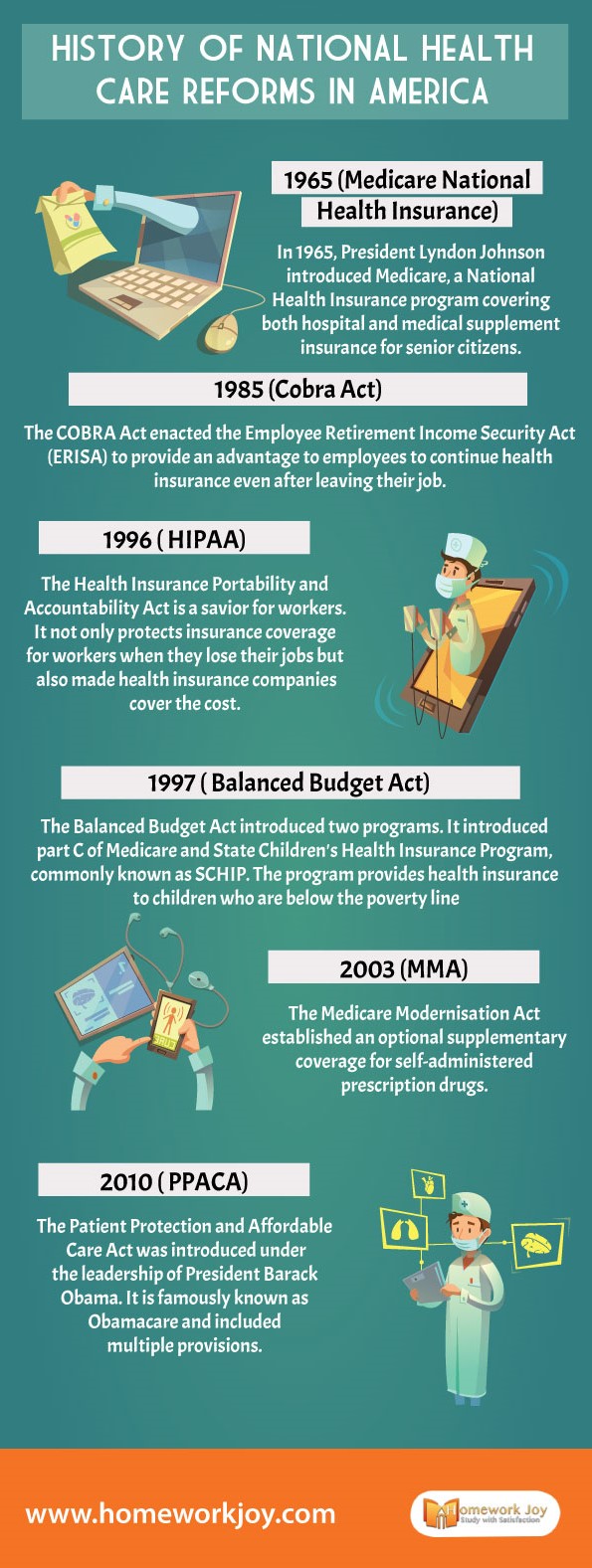The aim of every country is to provide health care reforms to its citizens. The US has more capacity to reform health care because of the high cost. Up to 2 million people have been affected by bankruptcies.
What is Health Care Reform, and why do we need it?
Healthcare reform is the part of government policy that affects the health care system in a given place. The aim of health care reforms is :
- To broaden the population receiving health care coverage either through public sector insurance programs or insurance companies
- Improving access to health care services
- To improve the quality of the healthcare system
- Provide more care to its citizens
- Decreasing the cost of health care
- To expand the health care providers through which consumers can make a choice
History of Health Care Reforms
Health care reforms have a long history in America. The reforms are often proposed but rarely accomplished. A landmark reform was passed in 2010 through two federal statutes: The patient Protection and Affordable Care Act (PPACA) and the Health Care and Education Reconciliation Act and became law on March 30, 2010. Given below is the history of healthcare reforms at the national level in America.
1965 (Medicare National Health Insurance)
In 1965, President Lyndon Johnson introduced Medicare, a National Health Insurance program covering both hospital and medical supplement insurance for senior citizens. Medicaid was also introduced, which permitted the Federal government to partially fund a program for the poor, with the program managed and financed by the individual states.
1985 (Cobra Act)
The COBRA Act enacted the Employee Retirement Income Security Act (ERISA) to provide an advantage to employees to continue health insurance even after leaving their job.
1996 ( Health Insurance Portability and Accountability Act )
The Health Insurance Portability and Accountability Act is a savior for workers. It not only protects insurance coverage for workers when they lose their jobs but also made health insurance companies cover the cost.
1997 ( Balanced Budget Act)
The Balanced Budget Act introduced two programs. It introduced part C of Medicare and State Children’s Health Insurance Program, commonly known as SCHIP. The program provides health insurance to children who are below the poverty line.
2003 (Medicare Modernisation Act )
The Medicare Modernisation Act established an optional supplementary coverage for self-administered prescription drugs.
2010 (Patient Protection and Affordability Care Act)
The Patient Protection and Affordable Care Act was introduced under the leadership of President Barack Obama. It is famously known as Obamacare and included multiple provisions.
Conclusion
We have traveled the difficult and bumpy road to healthcare reforms. We have yet not arrived at a more accessible and high-quality health care system. But that destination is worth the difficult journey.
